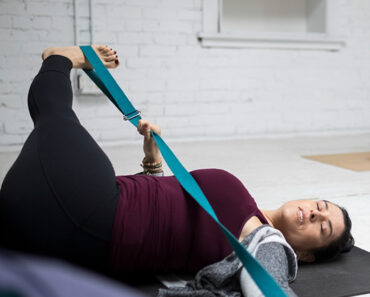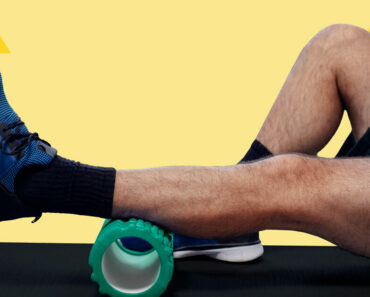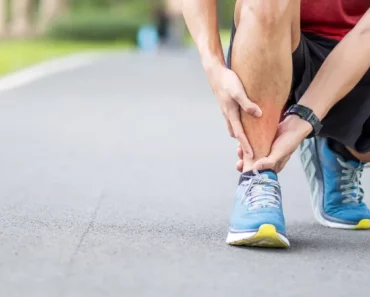If you’re an active individual, you may be familiar with the pain and discomfort of shin splints. This common overuse injury can cause pain along the front of your leg and shinbone, typically between your knee and ankle. Whether you’re a runner, military recruit, dancer, or play sports like tennis, shin splints can be a frustrating hindrance to your physical activities.
In this comprehensive guide, we’ll explore effective strategies to not only get rid of shin splints but also prevent them from recurring. We’ll cover everything from understanding the causes of shin splints to implementing rest, treatment, and preventive measures. So, let’s dive in and discover how to stop shin splints forever.
Understanding Shin Splints
Shin splints occur when the muscles and bone tissue in your leg become overworked due to repetitive activity. They often arise from sudden changes in the frequency, duration, or intensity of physical activity. For example, increasing your running mileage too quickly or switching to a harder surface can trigger shin splints. Certain factors, such as having flat feet or high arches, can also increase your risk of developing shin splints.
Recognizing the Symptoms
The most common symptom of shin splints is pain along the front of your leg and shinbone. You may experience this pain during or after physical activity, especially when running or engaging in high-impact exercises. Other symptoms can include tenderness, swelling, and a dull ache in the affected area. Ignoring these symptoms or continuing physical activity without proper rest and treatment can lead to more serious injuries.
Rest and Treatment for Shin Splints
Rest is crucial when it comes to healing shin splints. Avoid activities that cause pain, swelling, or discomfort. Active rest, such as swimming, is usually fine for shin splints, but if you suspect a more serious injury, consult a doctor. Additionally, the RICE (Rest, Ice, Compression, Elevation) approach can help expedite the healing process:
- Rest: Take a break from activities that exacerbate your pain. If you’re a runner, consider low-impact alternatives like swimming until your pain subsides.
- Ice: Apply ice packs wrapped in a towel to your shins for 15 to 20 minutes at a time, four to eight times a day. This helps reduce inflammation and pain.
- Compression: Wear a calf compression sleeve to reduce inflammation around your shins and promote proper blood flow.
- Elevation: Elevate your shins on a pillow or chair while icing to further reduce inflammation.
While resting, you can still engage in low-impact exercises like swimming, pool running, or biking to maintain your fitness level. However, if you’re a runner, reduce your distance, frequency, and intensity by approximately 50%. Avoid running on uneven surfaces, hills, and hard surfaces like cement. If available, consider using a treadmill for a more controlled running environment.
Stretching for Shin Splints Relief
Stretching the calf muscle and surrounding muscles is an effective way to alleviate shin splint pain. Incorporate the following stretches into your daily routine:
1. Seated Shin Stretch
This stretch targets the muscles at the back of your lower leg, providing relief for shin splint pain. Follow these steps:
- Begin in a kneeling position and gently sit down so that your heels are directly beneath your glutes and your knees are in front of you.
- Place your hands on the floor behind you and lean back slightly.
- Use your body weight to gently push down on your heels, feeling the stretch in your shin muscles.
- For an increased stretch, lift your knees slightly off the ground.
- Hold the stretch for 30 seconds and repeat up to three times.
2. Soleus Muscle Stretch
This stretch targets the muscles in the back of your calf. Follow these steps:
- Stand facing a wall or closed door and place both hands on it for support.
- Step one foot slightly behind the other.
- Slowly squat down, bending both knees to feel the stretch in your calf muscles.
- Keep both heels on the floor throughout the stretch.
- Hold the stretch for 30 seconds and repeat up to three times.
- Switch legs if desired.
3. Gastrocnemius Muscle Stretch
Stretching your calf muscles can also alleviate shin splint pain. Follow these steps:
- Stand facing a sturdy wall or closed door that you can push against.
- Place both hands on the wall for support.
- Step one foot back (the one you’re stretching) and keep that leg straight.
- Bend your front knee while keeping both feet flat on the floor.
- Lean your torso forward to feel the stretch in your calf muscle.
- Adjust your position if needed to increase the stretch.
- Hold the stretch for 20 seconds and repeat three times.
- Switch legs if desired.
4. Calf Raises
Strengthening your calf muscles can help alleviate shin splint pain. Try incorporating calf raises into your routine:
- Stand on a step or step stool with the balls of your feet on the edge and the back half floating off.
- Slowly raise up on your toes, lifting your heels as high as possible.
- Hold the raised position for 10 to 20 seconds, feeling the stretch in your calf muscles.
- Lower your heels back down and repeat the exercise three to five times.
5. Foam Rolling
Using a foam roller can reduce inflammation and alleviate shin splint pain. Follow these steps for a foam rolling technique specifically targeting your shins:
- Begin on your hands and knees with the foam roller on the floor under your chest.
- Bring your right knee toward your face and carefully place your right shin on the foam roller.
- Slowly roll up and down your shin, using your left leg on the ground to control the pressure.
- If you encounter a painful spot, stop and flex and extend your ankle before continuing.
- Switch legs if desired.
Over-the-Counter Pain Relief
In addition to the above measures, you can consider over-the-counter pain relievers to manage shin splint discomfort. Medications like ibuprofen (Advil, Motrin IB), naproxen sodium (Aleve), or acetaminophen (Tylenol) can help reduce pain and inflammation. However, it’s important to remember that pain relievers are not a substitute for treating shin splints. Combine them with stretching, foam rolling, and the RICE protocol until your pain subsides.
Preventing Shin Splints
Prevention is key when it comes to shin splints. By implementing the following measures, you can reduce your risk of developing this frustrating injury:
- Wear properly fitted and appropriate athletic shoes for your specific sport or activity.
- Consult professionals at a running store to observe your stride and recommend suitable shoes based on your foot structure and stride.
- Consider using shock-absorbing insoles to reduce the impact on your shins during exercise.
- Replace your athletic shoes regularly, typically every 350 to 500 miles of wear.
- Gradually increase your fitness level, allowing your muscles to adapt and avoid overexertion.
- Incorporate cross-training into your routine to vary your movements and prevent overuse injuries.
- Break up your normal exercise routine with low-impact activities like swimming, biking, or yoga.
- Pay attention to the surfaces you exercise on and avoid running on uneven terrain, concrete, or hills whenever possible.
When to Seek Medical Attention
In most cases, shin splints can heal with rest, treatment, and preventive measures. However, if your shin splint pain persists or worsens despite these efforts, it’s important to consult a healthcare professional. They can conduct a thorough examination and may even recommend an X-ray to determine the cause of your pain and provide appropriate treatment.
By following the strategies outlined in this guide and paying attention to your body’s signals, you can effectively manage and prevent shin splints. Remember, consistency is key in maintaining a healthy and active lifestyle.





I genuinely admired what you’ve accomplished here. The outline is elegant, your written content fashionable, however, you seem to have acquired some unease about what you wish to present going forward. Undoubtedly, I’ll revisit more often, similar to I have nearly all the time, in case you sustain this ascent.